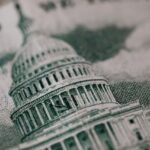In “Fentanyl Express,” a team of Reuters journalists spread across Mexico, the U.S. and China detailed the entire supply chain of fentanyl, by becoming buyers within it. The team acquired “precursor” ingredients and a pill press to prove how easy the drug was to produce, while on the ground in Columbus, Ohio, they witnessed how a new overdose reversal drug, Naloxone, was stemming deaths but causing new problems of its own. In between, the side effects of seemingly innocuous U.S. trade policy and the history of China’s opium wars expertly explain a complex system with devastating effects. The ground-breaking project won the Bronze award in the Global/National category of the 2025 Barlett & Steele Awards.
Reuters Editor-in-Charge for Computational and Forensic Journalism Maurice Tamman told the Reynolds Center how the investigation was made.
“The best job in journalism”
Spanning five stories and more than 25,000 words, “Fentanyl Express” began with a conversation between Tamman and his longtime boss, Reuters Enterprise Editor Mike Williams.
Tamman was wrapping up a year-long investigation tracking import-export data to uncover the supply chains of drones used by the Russian military in Ukraine when he met with Williams to discuss using similar reporting techniques to uncover the supply chain of fentanyl, from precursor suppliers in China to American cities.
“And, you know, there’s never actually a green light,” Tamman says, generally just a ‘yes’ or a ‘no’. “I often joke that I have the best job in journalism, and it’s not really a joke because I have the trust of an organization … no one tells me what to do.”
From here, Tamman conducted some pre-reporting, which revealed that his first plan for how to report the story would only be able to provide a retrospective view of how the system worked, “and I wasn’t interested in that. I wanted to know, how is it happening now?” At this junction, Tamman says, “we could dump the story — which is perfectly legitimate — and move on to something else … or we could do something different.”
Tamman pitched Williams on the idea of replicating the fentanyl supply chain by importing precursor chemicals from Chinese sellers to the U.S. themselves, demonstrating first-hand how regulatory loopholes were being used to legally obtain all the necessary ingredients to make America’s deadliest drug. “His first reaction was to laugh at me, to be honest,” Tamman says.
The lawyers
Once the novelty of the idea had settled, Williams sent Tamman to the lawyers.
“I knew this was going to be fraught from the very beginning,” he says. “I was under no illusion that what we were doing was going to be easy and that it was going to be something that the organization would quickly sign off on unless the lawyers had agreed to it.”
“And from that, we laid the groundwork for the reporting rules,” structuring how the reporting could proceed without breaking any ethical guidelines. “That was a whole mission — gosh — in and of itself, but ultimately they gave us the ‘yeah, this is okay.’”
Tamman then received a cash advance of $2,000 to buy bitcoin, and put a reporting team together across the U.S., China and Mexico, furnishing them with burner phones and laptops running Tails OS, a privacy-focused form of Linux.
Engaging the sellers
“In some ways, I was replicating the way a law enforcement agency might approach it,” Tamman says of how the story was reported. “But I don’t have the ability to subpoena; I don’t have the ability to do anything like that, all I have is the ability to convince people to sell me stuff.”
The bitcoin — which through lucky market timing appreciated to a value of around $6,000 — was used to buy fentanyl precursor chemicals from Chinese sellers found on dark-web drug marketplaces, including a site named Breaking Bad, after the TV show about a meth producer. “You couldn’t make it up,” says Tamman.
“We quickly realized that these people are everywhere and they’re advertising all over the internet,” Tamman says. “All we had to do was make a connection with them,” using freely available encrypted messaging apps like Signal or WhatsApp.
One of the ground rules agreed to before starting the reporting was that if any of the sellers asked if they were speaking with a reporter, the Reuters team would not lie. “But there was no curiosity about it,” Tamman says. “There was an assumption that we were buying this stuff to make fentanyl … they could not care less. The team ultimately received 12 shipments from these suppliers, with eight deliveries to the U.S. and four made to reporters in Mexico. “It was shockingly easy, honestly.”
Focusing the story
Where plenty of existing reporting had detailed the workings of Mexican cartels, the supply chain of fentanyl was not widely understood, and it gave the project direct purpose. Early in his career, Tamman had an editor — “a very gruff fellow who I loved dearly” — who would “stand up in the middle of the newsroom sometimes and scream, ‘why should I give a rat’s ass about this story?’” The question has stuck with him. “If you can answer that question succinctly and without any particular cleverness, then you have a project.”
This does mean that a lot of reporting is left on the cutting room floor. “The amount of information that when we do projects like this that ends up never seeing the light of day is quite staggering and enormously wasteful,” says Tamman. “But I think, in the grand scheme of things, the only way you can ultimately service the reader and service the story is to explore things and then discard, and explore and keep, and explore and discard.”
The full five-story arc only being formalized after parts of the project were already published, owing to the election of President Donald Trump and the likely effects on trade policy.
Fentanyl Express and American trade policy
Trump reentered the White House with a mandate to tear up America’s trading relationships, and “Fentanyl Express” has been a reference point for U.S. policy and law enforcement. “We were reporting on stuff that the cops didn’t know about,” says Tamman. Since publication, his team have heard from law enforcement agencies that the series had been disseminated internally as a user guide to how the supply chain works.
The series’ second article focused specifically on how de minimis trade rules — loosened in 2016 to allow any package under $800 to enter the U.S. duty-free and with minimal paperwork and inspections — allowed fentanyl precursors to enter the U.S. more freely. In Trump’s July 2025 Executive Order ending de minimis, fentanyl is named at the top of Section 1, and most recently, Trump cut tariffs on China by 10 percent in exchange for Xi agreeing to tighten trade controls on fentanyl precursors, among other measures.
“But listen, this is like squeezing a balloon,” says Tamman. While these new measures might close off some paths for drug traffickers, they are “an incredibly agile and endlessly adaptable foe.” Fentanyl remains on American streets today, and several other countries could become the next staging grounds for this supply chain, he suggests. As Fentanyl Express makes clear, “this is not rocket science. It’s basic organic chemistry.”











